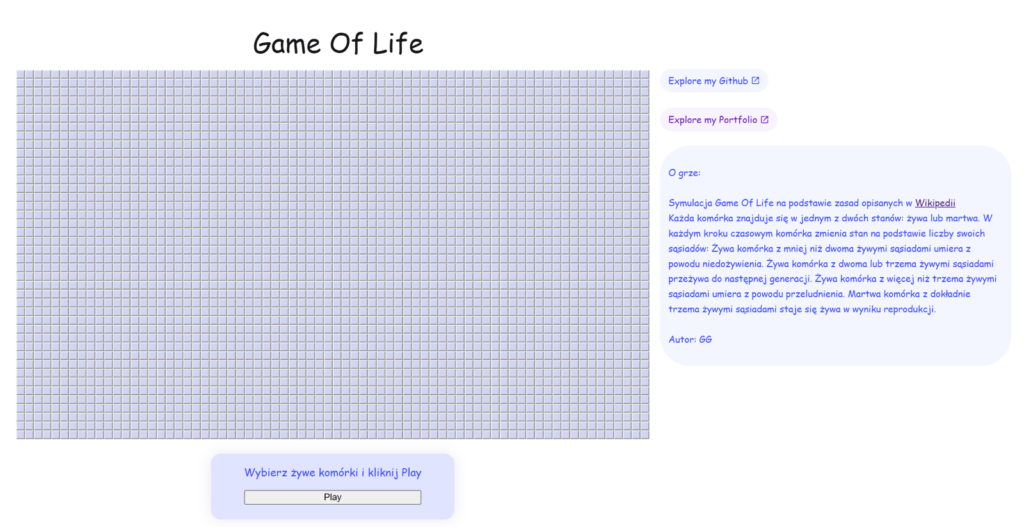The long weekend is already behind us, it’s time to get back to our daily routines. I recently had a week off, so I decided to make the most of this time. I did what brought me joy – I coded, just for fun:)
We decided to make use of a few days off. Just before the weekend, I received some assignments for my postgraduate studies in JavaScript Development. I decided to tackle them and create something cool. I must admit, I put quite an effort into it.
First up was the bouncy-simulator – a simulator of a ball bouncing off the edges of a board and obstacles that we can place on the board. To create this project, I used TypeScript and Angular. I based the main board on an array. Element 1 of the array represents my ball. X fields are the edges of the board, and Y fields are the obstacles (which disappear after being hit by the ball). I admit I struggled for quite a while with this algorithm, but I managed to create a cool algorithm that randomly directs the ball’s movement, and the ball’s movement is smooth and natural.

The second task was the Game of Life – a simulation of Conway’s game, built using the Angular framework. The Game of Life is a cellular automaton where each cell on the grid can be alive or dead, evolving through generations based on specific rules. In my program, you can set the initial state of the cells, start and stop the simulation, and reset the grid when needed. The implementation was very enjoyable, and my 9-year-old son had a lot of fun as my tester.

The third task – not any easier:) It’s a NODE.JS assignment. This application is an announcement-service – it allows managing advertisements on the internet. It enables adding, browsing, modifying, and deleting advertisements, each containing a title, description, author, category, tags, price, and other user-customized data. The main features of the application include setting the port and database using environment variables, endpoints for adding, retrieving, modifying, and deleting advertisements, as well as searching for advertisements based on various criteria. Advertisements are stored in a MongoDB database in the Atlas cloud, ensuring persistent data storage. Its not my first app with Mongo DB. The entire program is based on JavaScript, using Express.js and communication with the MongoDB database. The application also provides access security through passwords, logs actions and error handling through implemented middleware.
As you can see, I had a busy time, but I also have great satisfaction. I don’t regret a single minute spent in front of the computer, it’s time well spent. Now I’m already cruising through my postgraduate studies:)
This text was written by me and not by ChatGPT.
